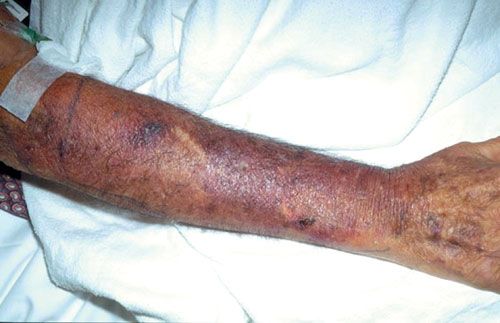High Mortality Associated With Non–Food-Borne Vibrio Infections
High morbidity and mortality are associated with non-food-borne Vibrio infections, particularly those caused by Vibrio vulnificus (Figure), a species that is endemic to the Gulf Coast of the United States
High morbidity and mortality are associated with non-food-borne Vibrio infections, particularly those caused by Vibrio vulnificus (Figure), a species that is endemic to the Gulf Coast of the United States.1 Analysis of 4754 cases of Vibrio infection reported to the CDC between 1997 and 2006 revealed that 1210 (25%) were non-food-borne infections. Of the 79 deaths attributable to non-food-borne Vibrio infections (of a total 369 deaths that occurred as a result of Vibrio infection with any species), 62 (78%) were caused by V vulnificus. Underlying liver disease was a strong risk factor for fatal infection.
Antibiotic therapy was administered in 85% of the cases reported, but the study authors noted that only 31% of patients received an effective agent and only 14% of patients received an effective agent as initial therapy. Patients who failed to receive effective antibiotic therapy within 24 hours of presentation were more likely to die of Vibrio infection than those who received timely treatment. Delayed hospitalization also was associated with death.1
Non-food-borne Vibrio infections are primarily associated with contamination of existing or new wounds during marine recreational activities, fishing, and handling seafood.

References:
REFERENCES:
1.
Dechet AM, Yu PA, Koram N, Painter J. Nonfoodborne Vibrio infections: an important cause of morbidity and mortality in the United States, 1997-2006.
Clin Infect Dis.
2008;46:970-976.
2.
Reddy B, Durham H, Kemmerly SA.
Man with a potentially life-threatening waterborne infection.
Consultant.
2004;44:1080-1081.